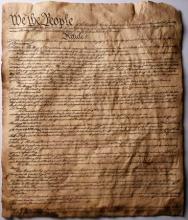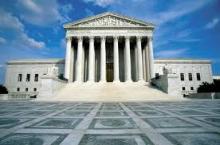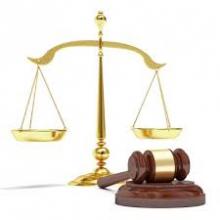Module 2: Israel’s Basic Laws and Its Supreme Court
1024px-Israeli_supreme_court_building_nightshot.JPG

I. Introductory Activity (10 minutes)
Ask participants to work in pairs and name an American Supreme Court case they know and to summarize it. Here are a few examples:
- Miranda v. Arizona (1966): Established the right of people to be informed of their Constitutional rights at the time of arrest.
- Brown v. Board of Education (1954): Struck down segregation laws on the basis that “separate but equal is inherently unequal.”
- Roe v. Wade (1974): Established the constitutional permissibility of abortion.
Ask participants to answer three questions about the Supreme Court case they select:
- Who was affected by the ruling?
- What changed in American society as a result of the ruling?
- What were some of the major questions that the case sought to answer?
Ask participants to share with the group.
II. Connect Lesson 1 and Lesson 2:
Yesterday we talked about the values behind Israel’s Declaration of Independence. In any country, it’s not enough to simply have values; you have to translate those values into rules and laws. In the United States, the values of our Declaration of Independence were translated into the rules of the Constitution, and the laws enacted by Congress and the states under the Constitution. When the values of the Constitution and the Bill of Rights seem to be in conflict with a law, the Supreme Court decides how to solve the problem. All of the cases we just mentioned dealt with laws that, in the eyes of the Supreme Court, violated the basic values of the nation as expressed in the Constitution, so the court changed the law or struck it down.
Today, we will be learning about how that process works in Israel.
III. Activity: Understanding the Basic Laws and the High Court of Justice (30 minutes)
1. Explain why Israel has no constitution although one is explicitly promised in the Declaration of Independence:
- David Ben-Gurion, Israel’s first prime minister, believed that writing a constitution would take up vital time and resources in the early years of the state, when there was more important work in infrastructure and security that needed to be done.
- Not all countries have constitutions, of course. Britain famously does not, and has been governed by a parliament for centuries.
- Instead, the Knesset established a series of Basic Laws, which were intended to eventually form a constitution (the constitution has not been established to this day).
2. Read through a list of Basic Laws (Handout 2a). Ask:
- What do you notice about the Basic Laws?
- Are there any surprises—any that you didn’t expect, or that you expected to see but don’t?
- Note that up to 1992, the Basic Laws described the makeup and functions of government; after 1992, two Basic Laws were passed that outline the rights of citizens (parallel to the U.S. Bill of Rights).
3. The Supreme Court
- Currently there are 15 justices, headed by the President of the Supreme Court. They are appointed by a special commission and can serve until the age of 70.
- Ask participants to read the section of the 1984 Basic Law on the Judiciary about the Supreme Court (Handout 2b), and to answer the questions with a partner.
- Discuss the questions as a group and be sure participants are clear on the function of the Supreme Court as High Court of Justice.
IV. Homework: “Israel’s Bill of Rights” – The Basic Laws After 1992
Ask participants to study two recent Basic Laws (Handout 2c and 2d) and answer the questions on the worksheet (Handout 2e). (They can start this during the session if you still have time, and/or it can be their homework).
As the session comes to a close, review the key points that were discussed today:
- Does a country need a constitution in order to be a democracy?
- What is the role of the Supreme Court in a democracy?
- Note examples from the U.S. and Israel
- How has Israel addressed constitutional issues in the absence of a constitution?
Introduce the homework assignment (above) and indicate if the work will form the basis of a wrap-up discussion in the next session.




